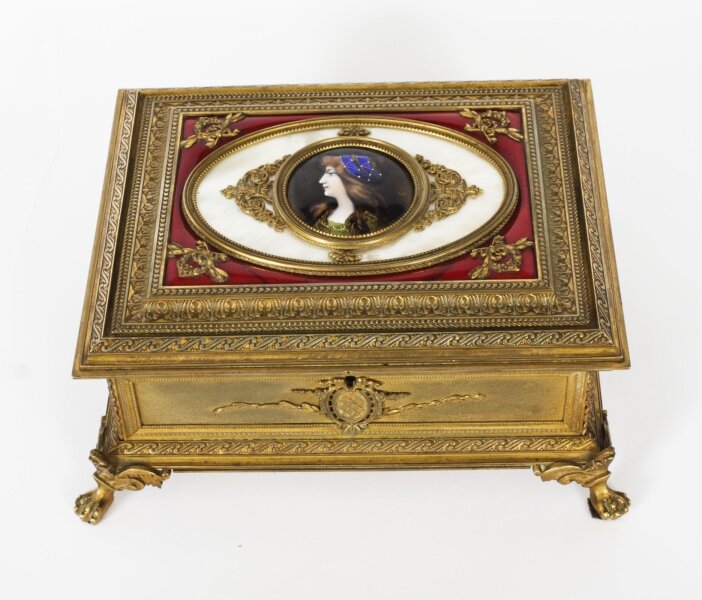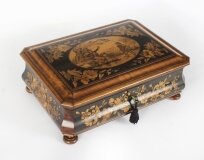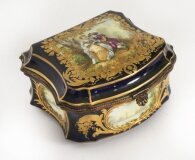Limoges enamel
has been produced at Limoges, in south-western France, over several centuries up to the present. There are two periods when it was of European importance. From the 12th century to 1370 there was a large industry producing metal objects decorated in enamel using the champlevé technique, of which most of the survivals (estimated at around 7,500 pieces), and probably most of the original production, are religious objects such as reliquaries.
After a gap of a century, the industry revived in the late 15th century, now specializing in the technique of painted enamel, and within a few decades making rather more secular than religious pieces. In the French Renaissance it was the leading centre, with several dynastic workshops, who often signed or punchmarked their work Luxury pieces such as plates, plaques and ewers were painted with sophisticated Mannerist decoration of pictorial figure scenes which on vessels were surrounded by elaborate borders.
In both periods the largest pieces include narrative scenes. These exemplify the styles of their respective periods. In the medieval champlevé the action is simply and directly shown by a few figures, with patterned backgrounds. In the Mannerist painted pieces numerous figures and detailed backgrounds tend to overwhelm the activity of the main figures.
After a decline from about 1630, and later competition from porcelain, high-quality production revived in the mid-19th century, and adopted art nouveau and other contemporary styles, with a relatively small production.
Limoges enamel has been produced at Limoges, in south-western France, over several centuries up to the present. There are two periods when it was of European importance. From the 12th century to 1370 there was a large industry producing metal objects decorated in enamel using the champlevé technique, of which most of the survivals (estimated at around 7,500 pieces), and probably most of the original production, are religious objects such as reliquaries.
After a gap of a century, the industry revived in the late 15th century, now specializing in the technique of painted enamel, and within a few decades making rather more secular than religious pieces. In the French Renaissance it was the leading centre, with several dynastic workshops, who often signed or punchmarked their work Luxury pieces such as plates, plaques and ewers were painted with sophisticated Mannerist decoration of pictorial figure scenes which on vessels were surrounded by elaborate borders.
In both periods the largest pieces include narrative scenes. These exemplify the styles of their respective periods. In the medieval champlevé the action is simply and directly shown by a few figures, with patterned backgrounds. In the Mannerist painted pieces numerous figures and detailed backgrounds tend to overwhelm the activity of the main figures.
After a decline from about 1630, and later competition from porcelain, high-quality production revived in the mid-19th century, and adopted art nouveau and other contemporary styles, with a relatively small production.
Ormolu
(from French 'or moulu', signifying ground or pounded gold) is an 18th-century English term for applying finely ground, high-carat gold in a mercury amalgam to an object of bronze.The mercury is driven off in a kiln leaving behind a gold-coloured veneer known as 'gilt bronze'.
The manufacture of true ormolu employs a process known as mercury-gilding or fire-gilding, in which a solution of nitrate of mercury is applied to a piece of copper, brass, or bronze, followed by the application of an amalgam of gold and mercury. The item was then exposed to extreme heat until the mercury burned off and the gold remained, adhered to the metal object.
























